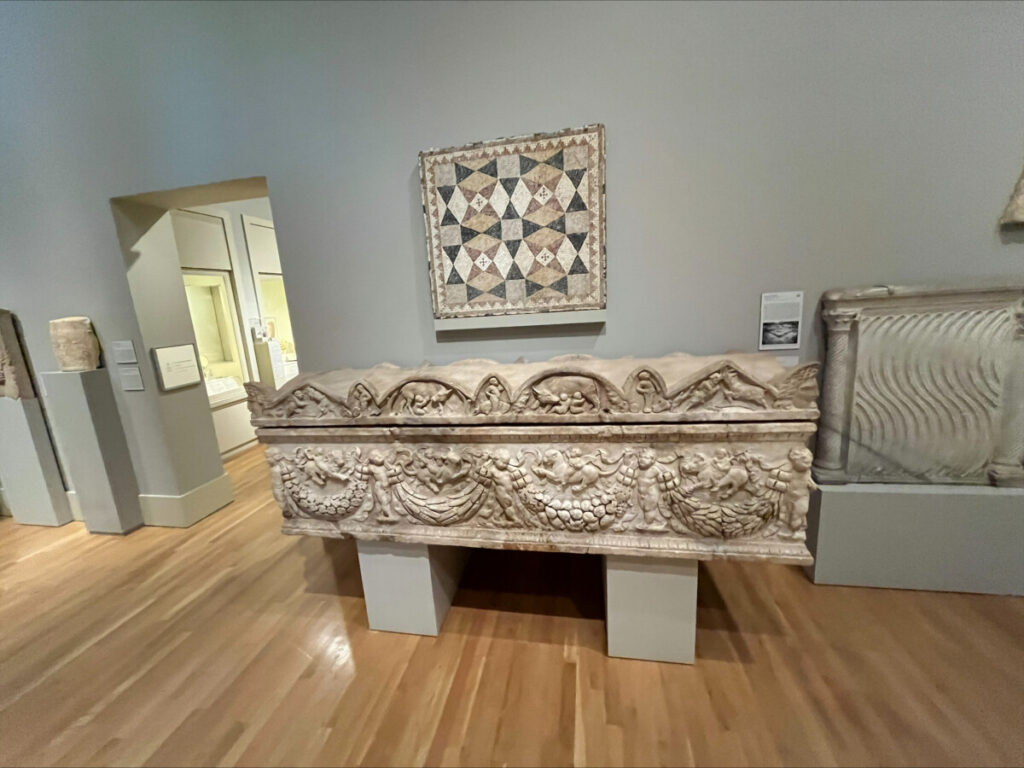When visiting the Carlos Museum, I saw an artwork entitled Garland Sarcophagus that caught my eye. I have always loved looking at Roman art, and this particular sarcophagus was dated to the mid 2nd century AD and was from Rome. It reminded me of Baroque art because of the narrative that could be understood when the carvings in the sarcophagus were looked at more closely. I studied the sarcophagus before reading the wall label, but quickly went back to studying it because the label gave a description of the scenes that were being portrayed on the artwork. It showed four depictions of Cupid who represented the four different seasons depending on what they were holding. Additionally, there are more mythological scenes being portrayed on the lid, with depictions of Romulus and Remus as well as the god Dionysus. While this is all described in depth in the wall label, the scenes are easy to make out when looking at the sarcophagus itself. This reminds me of other pieces of art we have studied in class that also have narratives involving mythology.
If this object were to be displayed in a Baroque collection, I feel like it would go with other works of art that also contain mythological narrative scenes or ones that express a lot of emotion. Since Baroque encompasses so many different kinds of artwork from regions all around the globe, it’s difficult to envision how this Garland Sarcophagus would be displayed but hopefully displaying it with other mythology narratives would make sense. This sarcophagus, as well as others like it, are valuable to modern viewers because it depicts what ancient artists and people valued during that time. It means something that the vessel used to literally carry someone into the afterlife showed scenes of the four seasons and cupid, which therefore helps modern viewers understand ancient people’s values and beliefs.

